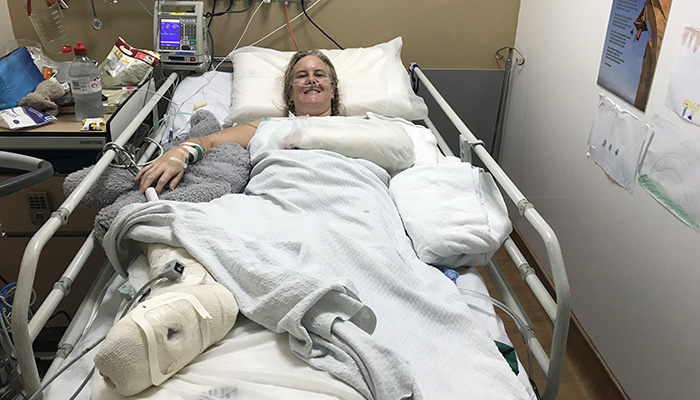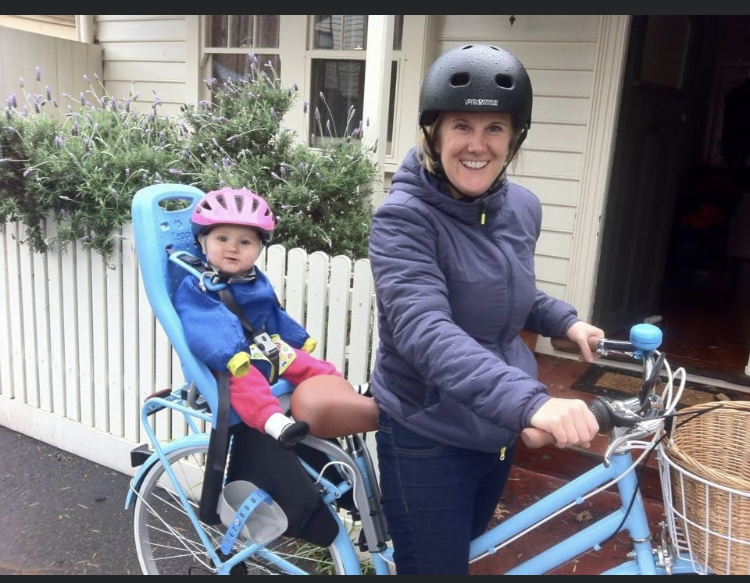How a sore throat turned into a fight for life
In 2019, mother-of-two Dr Mel White was the fittest she’d ever been, thanks to a regimen of bootcamp and cycling.
On a holiday in the UK, before taking up a position at the Institute for Molecular Bioscience (IMB), the researcher had a sore throat, and within days was in a fight for her life.
“I developed a fever, I started vomiting and hallucinating and was screaming in agony - the pain was like nothing I’d ever experienced, and I just got sicker and sicker.”
Over the next terrifying week, Dr White became critically ill. Her kidneys and liver started to fail, and an infection in her foot was spreading.
Her medical team discussed amputating her leg to save her life. Her family was called in when doctors weren’t sure she would survive.
“Eventually they identified a strep infection – it was in the tissue, the blood and the bones. I had been on antibiotics since I first got to the hospital but they hadn’t been working.

They tried different combinations of intravenous antibiotics and eventually found four that seemed to fight the infection and they got me stabilised,” Dr White said.
In Dr White’s case, the bacteria were partially resistant to antibiotics. It took multiple surgeries to remove affected tissue and reconstruct her foot.
The limp and chronic pain is here to stay
“I had to go through massive amounts of rehab and physiotherapy and I spent most of 2020 learning how to walk again,” she said
.
“I’m always going to limp, and I have chronic pain, but I have something that kind of looks like a foot and I still have my legs. So a much better result than we expected at the time.”
BY THE NUMBERS
20%
of all deaths worldwide
are due to sepsis
Since winning her fight against sepsis, Dr White has established her laboratory at IMB and won a prestigious research fellowship.

While her personal battle was with resistant bacteria, Dr White’s research focuses on another devastating medical condition: defects of the neural tube.
Researching defects of the neural tube
“This embryonic structure forms into our brain and spinal cord,” Dr White said.
“The incorrect formation of the neural tube is one of the most common birth defects, affecting 300,000 babies worldwide each year.”
“My research seeks to understand the underlying process of neural tube formation so we can understand the cause of these birth defects.
This knowledge will form the basis of diagnostics and treatments in the future.”
